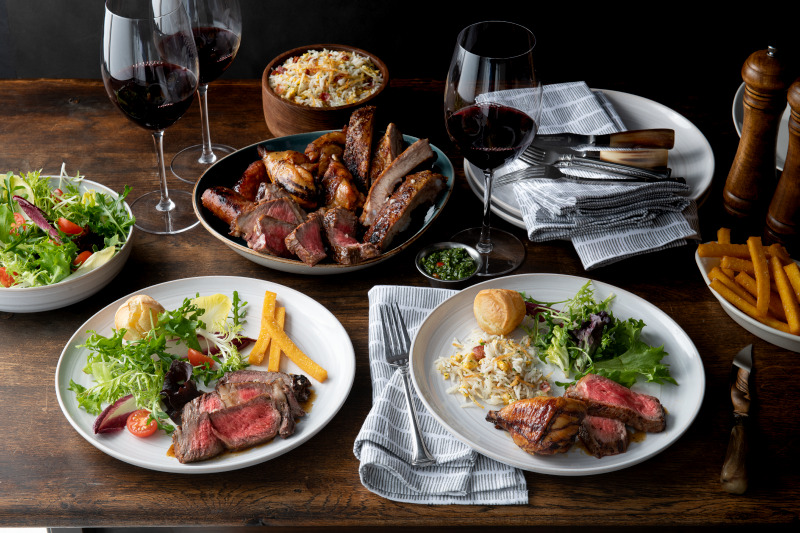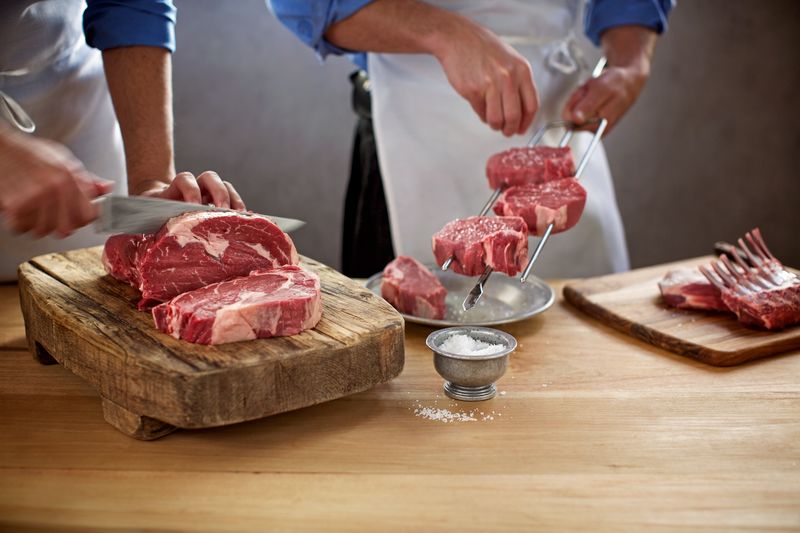With warmer weather and grilling season kicking off, Fogo De Chão’s gaucho chefs say knowing how and where to cut meat makes a world of difference for maximum flavor and tenderness. These masters of churrasco are trained to slice, season, and grill every meat to perfection, from a ribeye to a tomahawk steak.
I interviewed Chef Antonio Iocchi, Senior Vice President of Global F&B Innovation at Fogo de Chão, to learn how to make steaks at home that rival the quality of the ones served at a Brazilian steakhouse. Antonio Iocchi joined Fogo in 2019 as Senior Vice President of Global Innovation where he leads food and beverage development. Chef Antonio has extensive large and small restaurant brand experience, having led culinary innovation at Romano’s Macaroni Grill, Zoës Kitchen, and Trilussa Trattoria. He also held prestigious executive chef roles in Rome, Italy, including at Michelin-rated Il Pianeta Terra after graduating from the Istituto Alberghiero di Roma, a professional culinary institute. Here’s what he shared.
Common mistakes when preparing meats

Per Iocchi, he’s seen home chefs make many of the same common, yet easily avoidable, mistakes when cutting and grilling meat at home. “One of the most frequent issues when grilling is having the grill too hot. It’s best to wait for charcoal grills until the flames die down and the coals are glowing before placing the meat on the grill,” he says.
“Another common mistake is cooking meat straight from the fridge. No matter the cut, it’s important to let the meat come to room temperature before grilling to ensure even cooking. Once it’s off the grill, don’t forget to slice it against the grain—this simple step makes a big difference in tenderness and flavor.”
Slicing different cuts for tenderness

Iocchi says slicing techniques can vary depending on the cut of meat, but in most cases, he recommends slicing against the grain for the most tenderness. “Take picanha, for example. When served Fogo-style in a C-shape, it’s sliced with the grain because the pieces are so thin. But if you’re enjoying picanha as a steak, it should be sliced against the grain. For more tender cuts like filet mignon, the approach is actually reversed. Because filet is such a naturally tender and forgiving cut, it’s typically butchered against the grain and then sliced with the grain after grilling,” he says.
Seasoning and marinating meat before grilling

Fogo de Chão is known for seasoning cuts to enhance flavor and tenderness. The restaurant’s signature cut, Pincaha, and premium cuts like filet mignon are seasoned with rock salt to enhance the natural flavors of the protein cut.
“At home, seasoning and marinating can be a fun and personalized experience based on your flavor preferences. However, when it comes to marinating or brining, I recommend going easy on the salt. Letting meat sit in a salty marinade for too long can draw out moisture, leaving it dry. Instead, I always suggest adding salt before grilling to help the meat retain its natural juices,” says Iocchi.
Ideal grill temperatures

Cooking at the ideal grilling temperature for your specific cut of meat is also extremely important for a killer steak. Fogo de Chão uses exceptionally high heat, between 650 and 800 degrees Fahrenheit. Using a churrasco technique allows them to develop a flavorful bark on the meat’s exterior without charring or burning it in the flame.
“When grilling at home on a charcoal or gas grill, it’s important to set up two heat zones: one for high heat and one for low. I recommend aiming for around 400 degrees Fahrenheit in the high heat zone to get a nice sear and grill marks, and 280 to 300 degrees Fahrenheit in the low heat zone to gently finish cooking the meat. This method gives you greater control and helps lock in flavor without overcooking,” says Iocchi.
Tips for home cooks to elevate steaks

For home cooks ready to up their steak game, Iocchi shares that the best way to replicate Fogo’s signature churrasco cooking style at home is by using a motorized rotisserie. Using this technique allows the meat to rotate slowly over consistent heat, helping to develop a flavorful bark on the outside, just like the one Fogo is known for.
During the butchering process, Gaucho chefs also use a classic chef’s knife when there’s no bone involved. If you don’t have a chef’s knife on hand, Iocchhi recommends using a knife with a slightly rounded blade and a length of 10 to 12 inches—it will give you a similar result. When it comes to slicing cooked meat, Gauchos switch to a passador knife, which features a straight edge. This design allows for clean, precise cuts, whether slicing directly from a skewer or cutting board.




